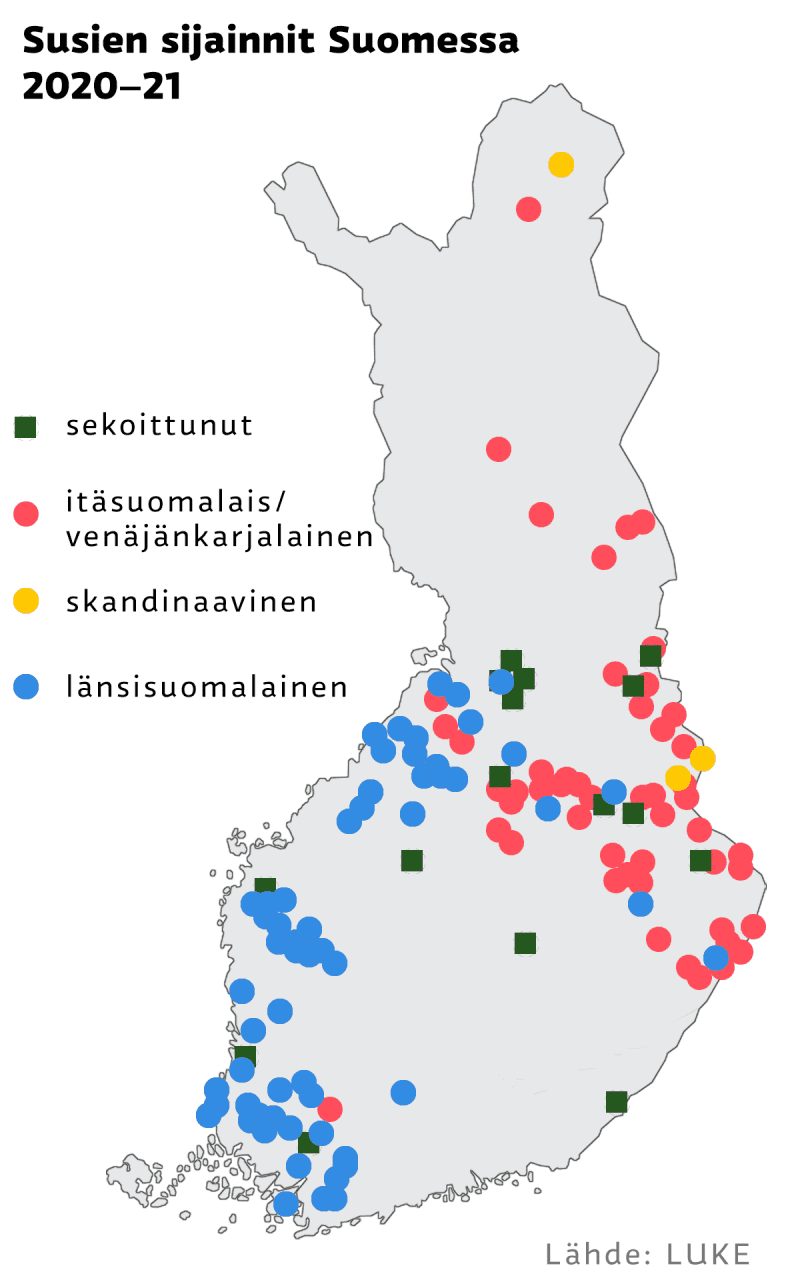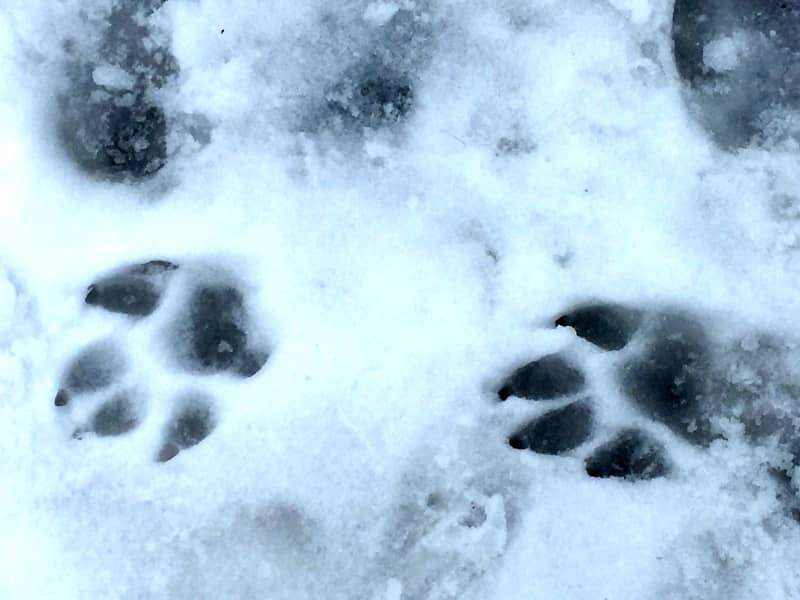The Natural Resources Institute Finland today published two years of reference values for the conservation status of the Finnish wolf population. However, the matter was not definitively resolved.
According to the Natural Resources Institute Finland, the maximum number of wolves in Finland may be around 1200 (range 1000-1500) in the southern part of the reindeer husbandry area. The reference value for favourable conservation is generally defined as being at most twice the minimum number of genetically viable populations. That number is 500 wolves.
The report on the determination of the reference value for the favourable conservation status of the wolf population, now published by Luke, provides a calculation model for calculating the reference value. The size of the reference value depends on the level of risk that decision-makers choose for the development of the wolf population.
The reference value describes the size of the wolf population that maintains the population at a favourable conservation status. These values can be calculated in a variety of ways and the tools produced by the project will allow decision-makers to consider the long-term and short-term viability of the wolf population in both genetic and demographic terms (population size and structure).
According to Luke, Finland’s current wolf population is too small to remain genetically viable. The reference value depends on the choices made by the decision makers and the chosen methods.
Five different ways to calculate the reference value
In his recent report, Luke presents five different calculation methods as the basis of the reference value. The wolf population is divided into western and eastern subpopulations, whose diversity is different. Genetic diversity is lower in the west and wider in the east, due to the connection with the Russian wolf population.
The Ministry of Agriculture and Forestry can use reference values \u200b\u200bfor planning the management of the wolf population. The European Union’s Habitats Directive requires that species deemed important by the community are to be preserved at a favorable conservation level
In accordance with the instructions of the Habitats Directive, biological and ecological aspects have been taken into account in the completed project for the definition of reference values. Wolf population management also involves socioeconomic and social issues, which decision makers take into account in their own work.
According to the wolf population management plan, the limit of a viable wolf population is 300 individuals or 25 breeding packs. However, the level of favorable protection is still much higher.

A year ago, in his interim report, Luke said that the definition of the smallest genetically viable population is based on the results of DNA analyses, their further analyzes and research data.
The preliminary results of the Natural Resources Center and the University of Oulu said then that the genetic diversity of the Finnish wolf population has decreased, but still remained at a good level. According to the estimate, the genetically viable population size would be around 500 individuals.
The smallest genetically viable wolf population of the Swedish and Norwegian wolf population is defined as 170 individuals, in which case the reference value would be 340. Of that, Norway’s share is 40 and Sweden’s 300. This is done according to the principle where the calculation method is twice the smallest genetically viable population.
Wolf population growth stalled
Based on the analyzes carried out in the project, the genetic diversity of the Finnish wolf population has weakened. Genetic diversity is a prerequisite for a species to maintain its ability to adapt to environmental changes in the long term.
One of the reasons for the weakening of the genetic diversity of the Finnish wolf population is the division of the population into two subpopulations, one in eastern and the other in western Finland.

The population estimate published in June, that the individual number of wolves was 279−321. In March of this year, there were estimated to be 290 wolves. In 2021, however, there had been a third more wolves.

According to Luke’s estimate, there were most likely 60 wolf territories in Finland in March 2022, inhabited by 37 family packs and 23 pairs. Compared to the previous year, the total number of regions has increased in Western Finland.
32 family herds and 21 pairs were most likely located on the Finnish side as a whole. The number of family flocks has increased by two and the number of couples by three compared to the March 2021 estimate.
Finland to the south of the reindeer herding area is almost entirely suitable for breeding wolf pairs. It can accommodate approximately 1,200 wolves.
Hunting will not start next winter
It is still difficult to estimate the duration of that update, but it is absolutely certain that the stock maintenance hunt will not start this winter. Damage-based trapper permits are issued as before, but before the new population management plan, the actual hunting is frozen.
According to Niemi, the genetic division of the wolf population into western and eastern subpopulations will permanently change perceptions of Finnish wolves.
On the other hand, the wolf population of Scandinavia, i.e. Sweden and Norway, is significantly less diverse than the western population of Finland, and yet Sweden will continue to allow wolf hunting.
The Nature Conservation Union agrees with the Ministry of Agriculture and Forestry on the need to update the wolf management plan.
The story was supplemented at 13:33 with comments from the ministry and the Nature Conservation Union.

